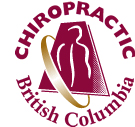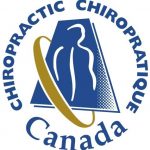Is Your Head on Straight?
By: Glenn E. Cripe, D.C. (Certified N.U.C.C.A. instructor, Newport Beach, California)
Most people have experienced back pain or spinal-related problems sometime in their life. There are numerous approaches to achieving relief from this often-disabling pain. There are procedures that vary as widely as bed rest to medication, acupuncture, acupressure, and then the extreme: surgery. All of these and other systems have had their degrees of successes and failures.
Perhaps the one thing that can be said for certain is that there is no cure-all, no one hundred percent solution for all back problems. It is after all, a very complicated problem. The spinal column along with various layers of muscles, and the nervous system largely make up the structure that not only allows us to remain up-right under gravity, but also allows us to bend, twist, and tilt. In seeking out help, most people will use the more conservative approaches first, like bed rest, and then keep moving toward the more extreme, like surgery, if they have not obtained the relief they need. In this arena of back pain procedures, there is a system that offers still another approach. It’s conservative, cost efficient, but, more importantly, extremely precise and painless. This procedure is named N.U.C.C.A. after the National Upper Cervical Chiropractic Association. The N.U.C.C.A. principles were developed in Michigan by Drs. Ralph Gregory and John Grostic in the 1940′s. N.U.C.C.A. was formed in 1965 as a national organization recognized by the federal government. N.U.C.C.A. is a group within the chiropractic profession that concentrates specifically on returning the head and neck to normal.
Some conditions that can benefit from chiropractic care begin and can end in the neck. Falls, a whiplash type of accident, or a twist of the neck can all result in the relationship of the head and neck going off center. By adjusting the head and neck, the entire spine, including the pelvis, can return back toward normal. This must be done before spinal balance can be attained.
The pelvis is the foundation for the spine; hence it supports the spine. As the head shifts off center, the pelvis must also shift. This is to keep the body as upright as possible. If the head is in its normal position, the pelvis will be directly under it. But if the head and neck misalign, the muscles of the back will automatically tighten to shift the pelvis so it will be as directly under the head as possible. This shifting of the structure of the spine and pelvis can be the cause of many back problems, such as low back spasms, headaches, poor posture, or tingling pain in the extremities, etc. Unless the head and neck are returned back to their normal positions, you may never really have a long-term correction with long term results.
Because the pelvis is the supporting structure of the spine, N.U.C.C.A., through precise instrumentation, measures its displacement and uses it as a gauge in determining if the patient is in adjustment or in balance. Three views of very exacting x-rays are taken and analyzed before any type of treatment is rendered. Each person has his or her unique type of misalignment pattern, which must be precisely determined. Once the type and degree of misalignment have been established, the doctor is able to direct a slight and controlled pressure into the neck at a particular spot, which will then bring the head and neck back towards normal. The closer the doctor can restore the head and neck to normal, the more stable and long lasting the adjustment will be. As the body returns to normal, the muscles will pull evenly, relieving muscle spasms. Swelling around the nerves can subside, relieving the pinched nerve feeling. Postural changes can occur along with the removal of stress on the weight-bearing joints (hips, low back).
After the correction has taken place, both the doctor and the patient should see significant results in postural changes. Each case is unique but generally symptoms can begin to alter from as soon as s few hours up to four to six weeks from the adjustment. After all, it usually has taken time to get out of shape. It will also take time for the tissue and nerves to heal.
As an alternative to correcting back problems, N.U.C.C.A. has had wonderful results and research documented over the past 50 years. So, when you get to the point where you thought you’ve tried everything you may want to find out if your head is on straight.
The x-ray series is an important step in the correction of the Atlas Subluxation Complex. The first set of x-rays is taken prior to the adjustment. These pre-films total 5 exposures. The analysis of these x-rays provides the precise misalignment factors and establishes the vectors that are needed for the adjustment correction. Following the initial adjustment, two post films are taken. These two films determine that the proper alignment of the atlas and subsequent neck vertebrae has been obtained.
Because of the precise requirements of these x-rays both in patient positioning and technical calibration, x-rays taken elsewhere, although of interest to the doctor, do not provide the necessary information for the mathematical evaluation of the films.
The Adjustment and The Patient
The word “adjustment” is a rather loosely used term in chiropractic today. It denotes the application of a force to a spinal bone (vertebrae) to move it from one position to another. The intention of the adjuster in moving a vertebrae is to correct the patient’s subluxation (a misaligned spinal bone causing harm to nervous structure). In order to do this; the adjuster must reduce the vertebrae to or toward its normal position. (The term “manipulation” is frequently used for the same reason).
The term “adjustment” means “to set right” and is, therefore, the preferred term in this office, because it accurately describes what we do here: re-set displaced vertebrae.
In order to know how to re-set displaced vertebrae, the doctor must first know how they are misaligned – the several directions in which they are misaligned. Vertebrae displace in more than one direction, and how far they have moved in degrees in each direction is required knowledge essential to their correction. X-rays are then measured to ascertain the several misalignments, and an adjustment structured from the x-ray analysis. X-ray is the only means from which a precise adjustment can be figured, and each patient receives an adjustment tailored to his/her needs. For this reason, this office refuses to adjust without taking x-rays because x-rays ensure the accuracy and individuality of the adjustment.
The practice conducted in this office is called Upper Cervical Technique. This means that the adjustment is given in the upper neck, applied to the first cervical bone called the atlas or C-1. The reason for correcting the atlas is that it affects the central nervous system (brain and spinal cord) when it subluxates. Because all other nerve systems in the body join the central nervous system, an atlas subluxation affects the entire body. As a result of an atlas subluxation, the patient’s entire spine and pelvis are distorted from its true axis by spastic contracture of the spinal extensor muscles because the atlas subluxation interferes with the essential inhibitory control to the muscles. A very precise adjustment is, therefore, necessary to obtain an atlas subluxation correction sufficient to restore spinal balance and inhibitory control by regulating the neuro-mechanisms in the brain stem.
The atlas or C-1 subluxation is known as the Atlas Subluxation Complex (ASC) because it distorts the spine and pelvis. Vertebrae below the atlas are also misaligned in over 90 percent of the cases and must be realigned by a C-1 adjustment. Thus, it is a complex-composed of many parts. The complex is a biological stressor, a strain or interference affecting the entire body. If the spine and pelvis measure normal after an adjustment, the electro-chemical flow of the nervous system is balanced.
REGULAR OFFICE HOURS
Monday: 9AM - 5:30PM
Tuesday: 10AM - 6PM
Wednesday: 9AM - 5:30PM
Thursday: 10AM - 6PM
Closed Friday, Saturday and Sunday



